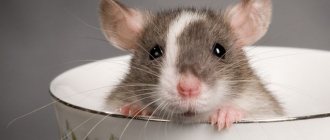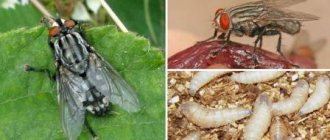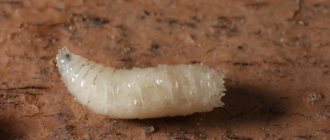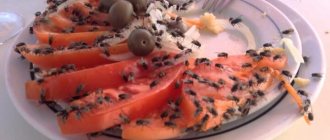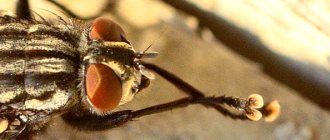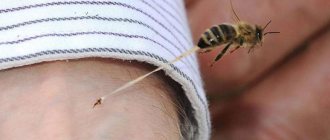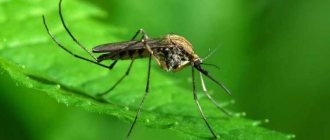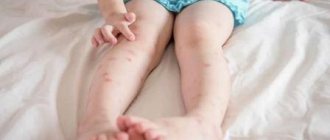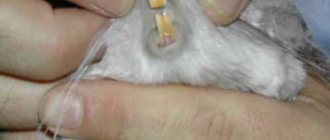Flies are insects well known to each of us, which become especially annoying with the arrival of autumn. The constant buzzing and desire of the insect to settle on the human body causes great inconvenience. Therefore, we strive to eliminate flies by any means possible.
Not all flies bite. Common indoor species that often appear in human homes are not blood-sucking - the touch of their paws causes discomfort. Another subtype is more dangerous - burner flies. Outwardly, they are similar to indoor ones - they have the same gray body, and grow up to 7 mm in length. They differ from non-predatory species in the structure of their proboscis. In a simple insect it is too soft, but in live insects it is elongated and has chitinous, rough plates that pierce the skin of the victim. Both females and males bite. Basically, flies attack animals, but they often attack people.
What flies can bite and how to distinguish biting flies from harmless ones?
There are about 5,000 species of flies all over the world, and each species differs from the other in color, size, body structure and many other characteristics. In nature there are flies that feed exclusively on liquid plant food. This is due to the presence of a soft proboscis that is not capable of biting through the skin. Therefore, such flies are forced to feed on manure, feces, plant sap, and so on.
However, there are other flies, for example, such as the zhigalka . It differs from an ordinary housefly, firstly, in the structure of its proboscis, its proboscis is much longer, and it also has special bristles at the end, the proboscis itself is hard, thanks to which the live fly is able to pierce the top layer of skin - the epidermis - and drink blood. Secondly, it is also worth noting that another important difference is the structure of the wings. In the house fly they are located along the body, and the wings of the burner fly look to the sides. On average, the size of the gray body of fireweeds is 7 mm.
During the summer period, females lay eggs, and burners are very fertile. Over the course of her entire life, one female can lay up to 400 eggs. A week after the female has laid her eggs, the eggs hatch into larvae that have a slightly white-dirty hue. After 3-4 weeks, the larvae turn into pupae and literally after 27 days the pupae produce a young zhigalka. In turn, the young zhigalka, literally after 15 days of its formation, also lays eggs, like other adult female zhigalkas.
It turns out that during the summer the flies actively reproduce, the younger generation grows up, and in the fall their numbers become larger , at least very noticeable even for us.
It is noteworthy that if in mosquitoes, for example, only females bite, in mosquitoes both male and female take part in this.
Most often, live flies attack animals, but they do not mind feeding on human blood. Light flies prefer to attack people who are sedentary, that is, the elderly, the disabled and even infants.
Complications and consequences
If flies bite in the fall, then their attacks do not cause much concern. As the weather gets colder, the insects will disappear. However, multiple bites provoke allergic reactions and skin diseases. Another thing is the consequences of the bite of a fly such as tsetse. Complications can develop several weeks or months after the pathogen enters the human body.
The specificity of this disease is a long period of development - up to 5 years. After infection with trypanosomes, the first period begins - hematolymphatic. Blood poisoning in tsetse victims is accompanied by fever. The insect bites only once, and this is not enough to cause irreversible changes.
An ataxic gait, tremors of the limbs, and signs of depression indicate a mortal danger to humans. Then a coma develops.
Why do flies bite?
Why do flies bite? The answer was partially given in the previous paragraph: by August their population becomes larger, competition for food becomes stronger, so the flies switch from feeding on animal blood to human blood.
In fact, some species of flies need blood to reproduce. This is the simplest and most logical explanation. They anticipate the approach of cold weather and begin to bite everyone in a row, just to have time to get enough and reproduce new offspring.
In the spring, flies just appear, biting flies begin to lay eggs, in the summer, young individuals form, and closer to autumn they become adults, capable of independent existence. Therefore, in the fall there are so many of them that they have to compete with each other in search of prey.
Bloodsucking, family Hippoboscidae
All representatives of this family are similar: a flat body, jagged legs widely spaced. Adults suck blood from humans or animals. They immediately give birth to live flies.
Deer bloodsucker (Lipoptena servi L)
A tiny insect, very aggressive, “evil”. It prefers large warm-blooded animals, for which it is also called the moose louse, but it does not disdain humans. Lives in forests, tundra, steppe zone.
The bites are painful and irritate the skin. One bite is enough for blood to flow from the wound, the temperature to rise and body aches to begin. In addition to physical discomfort, this tick-like little thing spreads Lyme disease and many others. Its durable shell and special body structure make it indestructible - it is almost impossible to crush it with your fingers.
Horse and dog bloodsucker (Hippobosca equina L., Hippoboska longipennis L. = Hippoboska capensis Olf)
Small, annoying, biting flies that prefer wooly warm-blooded animals, but they will definitely bite a person if he passes by. They often live close to people.
Is a fly bite dangerous for humans?
The bite of flies is dangerous , since these flies can be carriers of various terrible diseases, such as polio, anthrax, tuberculosis, relapsing fever and many others. During a bite, penetrating the skin with their proboscis, flies emit poisonous saliva, thereby, in addition to the pain from the bite, we also feel itching, burning, and the skin turns red at the site of the bite.
However, not only the bite of the flies itself is dangerous; if basic hygiene rules are not observed while eating, the larvae of these flies can enter our body along with food.
First aid after a fly attack: pharmacy and folk remedies
Many people who have encountered insects are interested in what to do in case of fly bites and how to prevent serious consequences. After contact with a horsefly or autumn fly, you need to provide first aid to the victim.
Basic measures:
- The damaged area should be washed with plenty of running water.
- The wound must be treated with brilliant green, hydrogen peroxide or any other antiseptic.
- To reduce the inflammatory process, drugs with anti-inflammatory effects are used - for example, Fenistil or Lokoid.
On a note! Most often, fly bites do not have serious consequences. But they become the causes of severe allergic reactions with complications such as Quincke's edema and anaphylactic shock. To avoid them, the victim must take an antihistamine - Diazolin, Suprastin, Loratadine, Zodak.
Horseflies
Also one of the most biting types of flies are horseflies. They come in several colors: brown, yellow and gray. The size of their bodies reaches 3 cm.
These flies, as a rule, live near water bodies and swamps, since they cannot exist without moisture. The habitat of horseflies is located on almost all continents of planet Earth, with the exception of Antarctica, Greenland, and Iceland. These blood-sucking insects most often attack cattle and people. If in the first case, both males and females drink blood from live fly flies, then in horseflies, only females ; males prefer plant food.
The bite is so painful, that is, even people with normal skin type immediately experience itching, pain, burning and redness at the site of the bite. They say that there were cases when, after being attacked by a large number of horseflies at once, people ended up in intensive care due to lack of blood. Most likely this is fiction.
If we compare the amount of blood that a horsefly and a mosquito can drink, then one horsefly is capable of pumping into its body a volume of blood equal to the volume of 70 mosquitoes.
The horsefly, like other flies, is dangerous, not so much because it drinks blood from animals and people, but because during its bite it also throws out its saliva. Its saliva contains various toxic components, which cause skin irritation. But that’s not even the point, their saliva can also contain various bacteria that give rise to such terrible diseases as anthrax, polio and many others.
Therefore, it is recommended that in order to minimize the possibility of saliva penetration, it is necessary to apply pressure to the bite site; in case of redness or burning, it is necessary to apply a piece of ice.
Fleas
The bites of these creatures cause discomfort and swelling. Symptoms appear several hours after the attack. If you suspect a flea bite, gently apply pressure to the affected area with clean hands. If the skin turns white, it means that the person has become a victim of this insect. Fleas can be carriers of pathologies. The victim should seek medical help. To prevent flea attacks, pets must be treated with insecticides.
Tsetse fly
One of the most dangerous types of flies on Earth are Tsetse flies. Their habitat is in Africa. Tsetse are deadly.
It is noteworthy that these flies are viviparous, that is, they give birth to an already viable larva.
The tsetse fly is dangerous because it is a carrier of trypanosomes that parasitize the blood of humans and animals. When it gets into the blood, it has a destructive effect: a person’s immune and nervous systems weaken, various tumors appear, and in general the person weakens, which is why this disease is also called sleeping sickness.
Where do they live in Thailand?
Sand flies live throughout Asia and are found in Africa and America. China, Philippines, Cambodia, Maldives, Vietnam, Myanmar, Malaysia, Madagascar, Dominican Republic - this is an incomplete list of countries. It turned out that not the most bloodthirsty individuals live in Thailand. Statistics show that sand flies are found in wetlands: mangroves, salt water backwaters, and seaweed beaches.
I have not noticed such flies in Phuket. They live on a pair of islands nearby: Hong in Krabi province and Rang Yai. The latter is home to a pearl farm, which may be what attracts insects. Hong Island in Krabi is known to you from the film “The Jungle” with Vera Brezhneva and Sergei Svetlakov. This is part of the national park. On one side of the island there is a gorgeous white sand beach, on the other there is a lagoon with mangroves.
In other places - in Phang Nga Bay, on the islands of James Bond, Yao Yai, Phi Phi, Rock and Ha, Racha, Coral, in the Khao Lak area, on the beaches of Krabi - insects did not bite. And I have never seen sand flies on Koh Samui. They say that they bite on Koh Phangan and Tao.
Most of the people bitten are on the islands of Chang, Mak and Kud. Vacationers sometimes even sound the alarm. Sand flies are found even in Pattaya, on the island of Samet, on the beaches of Chumphon, Cha-Am and Hua Hin.
How to treat?
- The bite site should be thoroughly washed with soap, poured with peroxide or wiped with alcohol; as a rule, this is enough to disinfect the bite.
- If swelling appears at the site of the bite, it is recommended to make a compress from pieces of ice.
- If itching occurs, you must use a special anti-itch cream.
- If the itching does not go away and the redness increases, take an antihistamine, it will relieve allergy symptoms.
- Monitor the damaged area of skin and general condition. If the wound begins to fester or swelling does not go away, consult a doctor.
Typically, a fly bite will heal within 1-2 days if you do not scratch it.
Ants
The bites of these creatures are accompanied by a small rash similar to purulent pimples. The ants that are found in Russia are not dangerous.
But there are insects living abroad whose bites cause serious health problems. If attacked by such ants, you should seek medical help.
A Brazilian travels 36 km by bike every day to take his loved one home.
Women's jeans: before you buy them, you need to pay attention to one detail
Lost weight: what Sofia Tarasova sacrificed for the sake of “VIA Gra” (new photos)
Prevention
It is very short and without innovations. At home, do not forget to use mosquito nets on the windows. And on the street, and especially during country house maneuvers, you should use special bloodsucker-repellent sprays and not yawn.
OUR READERS RECOMMEND!
To get rid of insects, our readers recommend the Pest-Reject repeller
. The operation of the device is based on the technology of electromagnetic pulses and ultrasonic waves! Absolutely safe, environmentally friendly product for humans and pets. Read more here...
How to counteract?
Comprehensive measures include the use of the following procedures:
- Pest control. It is carried out with insecticides for home and/or outdoor use. The former are safe for people and warm-blooded animals and are sold in the form of sprays and aerosols. Typical representatives are Raid, Raptor. The latter are more toxic and are most often used as solutions for treating open ground, vegetable gardens, plants, and trees. Typical representatives are Agita, Kwik-Byte, Fostran.
- Repellent. The repellent effect is created by special ultrasonic devices, certain plant-based aromatic oils, and special smoke bombs.
- Capture and destruction. It is rational to use mechanical devices as a complement to insecticides and repellents. Effective options include sticky tapes, bait lamps, and homemade devices.
- Additional prevention. Includes regular cleaning of premises, removal of garbage, timely cleaning of cesspools, sewers and other actions as necessary.
